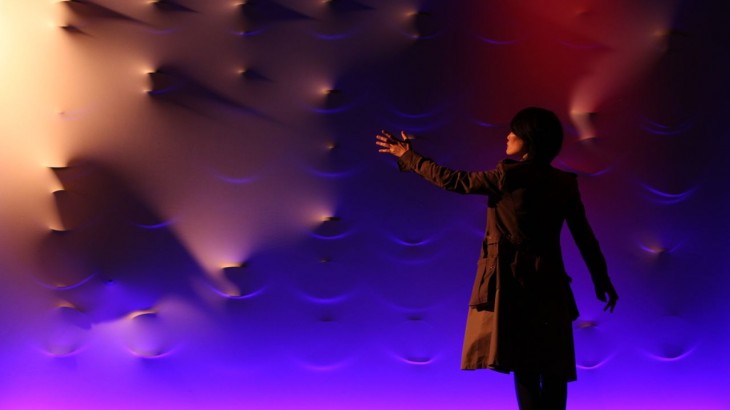In his text, “ Parametricism: A new global style for architecture and urban design”, Patrick Shumacher tries to convince the reader that parametricism is a style, and for this he uses multiple arguments.
First, he explains parametricism in a context of a research programme, which automatically justifies and legitimizes the unanswered issues and the unclear processes. Indeed presenting all the parametric manifestations as “experiences” protects all the parametric projects from eventual critics, whether at an intellectual or practical level, and sets a safe ground for his following argumentation.
In his argumentation, he describes parametricism as more than a set of tools, he argues that the nature of the digital
techniques used such as animation,simulation, scripting etc…inspired for actual values and ambitions. According to him these tools allow the integration of the social complexity of the post-fordist society in architecture and the mass customization among others. He divides those values in 5 different points:
- The parametric inter-articulation of sub-systems: which is the connection and interaction of the different subsystems such as envelope, structure etc…
- The parametric accentuation which consists on the accentuation of the differentiation and the merging through organic integration
- The parametric figuration which according to him allows each spatial reading to have a different variable, in other words a space that accommodates for change.
- Parametric responsiveness, which allows the space to integrate completely in its environment and respond to its changes in a real time adaption mode
- Parametric urbanism where the building morphology is completely integrated in the morphology of the urban fabric.
Those values are mainly related to the shape and morphology of architecture, all the arguments used give a very clear idea of how these tools actually morph the buildings. At no point does Shumacher make it clear how these tools could actually allow for social integration, how the resulting architecture deals with the habits of the users, their emotions, moods, way of living, their relation to the space, economy or politics, the exact issues that create the social complexity…
Then, to anchor parametricism as a style in the coming history of architecture, he opposes it to modernism. Again, the arguments that he offers concern mainly the shapes and itineraries. He opposes the rational linearity of modernism to the organic networks in nature that parametricism reproduces and that create optimal space distribution. Schumacher talks here about a whole new logic, a logic of relations based on fields and not voids, vectors and transformations.
Finally, he presents the different urban projects done by Zaha Hadid as examples of total merging in the existing different urban fabrics.
Apart from the fact that Schumacher tries to save his argumentation from any critical discussion while presenting it as a research programme, we would expect different kinds of arguments concerning the inscription of parametricism as a style.
In fact, all the styles are based on a certain philosophy concerning the human being, and the relation of human to society and to space. These philosophies always acknowledge political and economical contexts, things that Schumacher does not mention in his article.
There is also contradictions between the theory that he presents and that seems quite consistent when it comes to shape and form but even in this field, on a practical level, the materials used in most of the projects contradict these values. In fact concrete is a very stable and solid material that does not allow for any changes, at no point does the author talks about new materials that could physically accommodates for changes and interaction.
Finally, rather than integrating the social complexity, Schumacher seems rather to tend into eliminating it. In fact, a city without landmark is a city without history, without time, without evolution.
The parametric city according to Schumacher does not give place to history, which is the main element in the understanding of the identity of a city. He reduces this same identity to a shape or an elegant form. This approach seems to work on cities if built from scratch and without any urban surrounding.
If the logic of parametricism is based on a bottom up approach, because it starts with a part and generates the whole from the different connection of the parts to the others, the way Patrick Schumacher talks about it, especially when it comes to the urban level, makes it seem more as a top down approach where a certain system is imposed on an existing urban fabric
An interesting research question that could emerge from the analysis of this text, is about how to, using these same digital tools, create shapes that could actually respond more to the rhizomatic approach that Deleuze exposes and that allows the absorption and integration of all the historical layers, the social forces and energies, the political and economic data, and not only a purely formal one that denies all existing and past data, an approach of link and not of rupture.
The key to this could maybe be found in the small scale interaction of the actual material to its environment.
Living-Wall By Behnaz Farahi- www.parasite.usc.edu
There are some projects such as Sou Fujimoto’s N house, that don’t respond at all to parametric techniques, and even use the absolute shapes such as squares that are considered as heuristic taboos, but yet contains all the values of integration and interaction that Schumacher presents as qualities exclusive to parametric architecture.
Other projects that deal with a direct interaction between the user and the architecture, try to explore in a more bottom up approach, how each individual could affect his or her direct architectural environment, and how this architecture would respond to a group of individual actions or presence.

